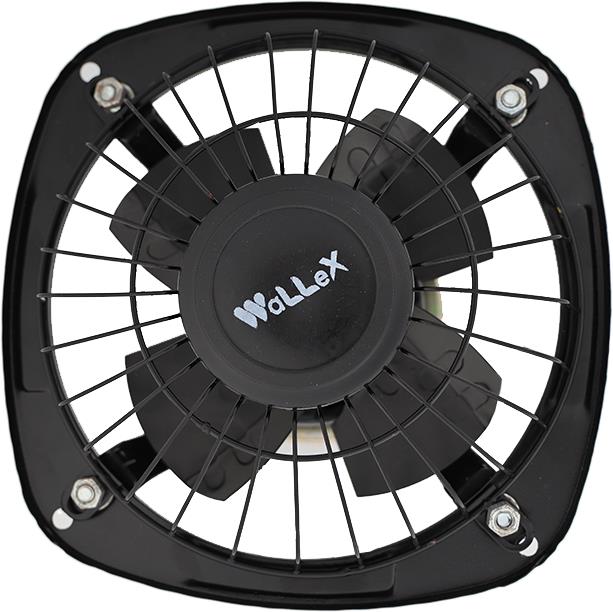Proper ventilation is one of the most important yet often overlooked aspects of a well-functioning kitchen. Cooking produces heat, steam, smoke, and odors that can quickly build up if not properly vented. Over time, this can lead to greasy walls, moisture damage, and unpleasant smells lingering throughout the home. The simplest and most effective solution is an exhaust fan — but choosing the right exhaust fan size for kitchen is essential for ensuring optimal air circulation and performance.
Whether you are upgrading your old kitchen exhaust system or installing one for the first time, the size of the fan makes all the difference. This comprehensive guide explains everything you need to know about selecting the right exhaust fan size for your kitchen, how to calculate the ideal CFM (Cubic Feet per Minute), and key factors to consider before making a purchase.
Why Exhaust Fan Size Matters in the Kitchen
Every kitchen, regardless of size or layout, requires adequate ventilation. When you cook, your stove releases heat, smoke, grease, and airborne particles. Without an efficient exhaust system, these contaminants can stick to your walls, ceiling, and cabinets, causing discoloration, odor, and even health issues over time.
The size of your kitchen exhaust fan determines how effectively it can remove this polluted air. A fan that’s too small will struggle to clear smoke and steam, leading to poor ventilation, while one that’s too large can waste energy and generate excessive noise. Choosing the right fan size ensures a balance between performance, efficiency, and comfort.
Understanding CFM – The Key to Sizing an Exhaust Fan
When buying or sizing an exhaust fan, the most important specification to look for is CFM, which stands for Cubic Feet per Minute. This value represents the volume of air that the fan can move every minute.
A higher CFM means the fan can move more air, making it suitable for larger kitchens or heavy cooking. A lower CFM may suffice for smaller spaces or light cooking activities.
Here’s a simple rule of thumb:
The more you cook and the larger your kitchen, the higher CFM you need.
How to Calculate the Right Exhaust Fan Size for Your Kitchen
Determining the ideal fan size isn’t guesswork—it’s based on a few simple calculations and considerations. There are two common ways to estimate the required fan capacity depending on whether you are installing a range hood or a wall/ceiling-mounted exhaust fan.
1. Sizing a Range Hood Exhaust Fan
If you are installing a range hood above your stove or cooktop, the fan size depends on the type of stove (gas or electric), the cooking intensity, and the width of the cooktop.
a. For Electric Cooktops
The general recommendation for electric cooktops is:
100 CFM per linear foot of cooktop width.
So, if your electric stove is 30 inches wide (2.5 feet):
2.5 × 100 = 250 CFM
That means you need a range hood fan of at least 250 CFM for adequate ventilation.
b. For Gas Cooktops
Gas stoves produce more heat and combustion gases than electric ones, so they require higher airflow.
1 CFM per 100 BTU (British Thermal Units) of total burner output.
For example, if your gas cooktop has a total burner output of 50,000 BTU:
50,000 ÷ 100 = 500 CFM
You’ll need a 500 CFM range hood fan to effectively clear the air.
c. For Heavy Cooking
If you cook frequently with oil, fry foods, or prepare dishes that generate a lot of smoke or grease, you should choose a fan with higher CFM (typically between 600–900 CFM).
2. Sizing a Wall or Ceiling-Mounted Kitchen Exhaust Fan
If your kitchen doesn’t have a range hood and instead uses a wall-mounted or ceiling exhaust fan to ventilate the entire space, you can calculate fan size based on room volume and desired air changes per hour (ACH).
Step 1: Measure Kitchen Dimensions
Measure the length, width, and height of your kitchen in feet. Multiply them to get the total volume in cubic feet.
For example:
Length = 10 ft
Width = 12 ft
Height = 8 ft
Volume = 10 × 12 × 8 = 960 cubic feet
Step 2: Calculate Required Airflow
Kitchens require about 15 air changes per hour for effective ventilation. Use the following formula to determine the ideal CFM: CFM=(Room Volume)×1560CFM = \frac{(Room\ Volume) \times 15}{60}CFM=60(Room Volume)×15
In our example:
CFM = (960 × 15) ÷ 60 = 240 CFM
So, you need a 240 CFM exhaust fan to adequately ventilate this kitchen.
Recommended Kitchen Exhaust Fan Size Chart
Here’s a quick reference to help you estimate fan size based on typical kitchen dimensions:
| Kitchen Size (sq. ft.) | Average Ceiling Height | Recommended CFM |
|---|---|---|
| Up to 70 sq. ft. | 8 ft | 150–200 CFM |
| 80–120 sq. ft. | 8 ft | 200–300 CFM |
| 130–200 sq. ft. | 8 ft | 300–400 CFM |
| 200–300 sq. ft. | 8 ft | 400–600 CFM |
| Over 300 sq. ft. | 8 ft or higher | 600–900+ CFM |
This table offers a general guideline, but cooking habits and kitchen layout can also influence the ideal fan size.
Factors That Affect Exhaust Fan Sizing
While CFM gives you a good starting point, other factors influence how effectively your exhaust fan performs. Consider these when choosing the right fan size.
1. Type of Cooking
If you regularly deep-fry, grill, or cook spicy and aromatic dishes, you’ll need a more powerful fan to clear smoke and odors efficiently. Heavy cooking may require 600–900 CFM, even for medium-sized kitchens.
2. Duct Length and Design
Long or twisted duct runs reduce airflow efficiency. The more bends and length in the duct, the higher the fan power needed to overcome resistance.
As a rule, increase the fan size by 10–20% for every 10 feet of ducting or multiple bends.
3. Kitchen Layout
An open-concept kitchen allows air to circulate more freely, requiring slightly less CFM. However, enclosed kitchens or those without windows need stronger fans to ensure adequate ventilation.
4. Ceiling Height
Higher ceilings increase room volume, requiring a higher CFM to achieve the same number of air changes. Adjust fan capacity accordingly for ceilings above 8 feet.
5. Vent Outlet Size
Ensure the fan’s outlet diameter matches your duct size (usually 4–6 inches). Using a smaller duct restricts airflow and reduces efficiency, even with a powerful fan.
Types of Kitchen Exhaust Fans
Different kitchens require different ventilation setups. Choosing the right type of exhaust fan is just as important as getting the correct size.
1. Range Hood Fans
Installed directly above the cooktop, range hoods are the most effective option for removing smoke, steam, and grease at the source. They can be:
- Wall-mounted hoods
- Under-cabinet hoods
- Island hoods (for kitchen islands)
Range hoods are available in a wide range of sizes (from 250 to 900+ CFM) to suit all types of kitchens.
2. Wall-Mounted Exhaust Fans
These are installed directly on an exterior wall and vent air straight outdoors. Ideal for small or medium kitchens where installing a range hood isn’t feasible.
3. Ceiling Exhaust Fans
Mounted on the ceiling and connected to an exterior duct, these fans draw air upward. They are less efficient than range hoods for removing grease but work well for general air circulation.
4. Inline (Ducted) Fans
These fans are installed inside the ductwork, often in attics or crawlspaces, for quieter operation and stronger suction. Suitable for large kitchens that need powerful ventilation.
Noise Level Considerations
While performance is key, noise can be a major deciding factor. Fan noise is measured in sones — a lower sone rating means quieter operation.
- 0.5–1.5 sones: Very quiet (premium models)
- 2.0–3.0 sones: Moderate noise (comfortable for most kitchens)
- 4.0+ sones: Noticeable sound (often in high-powered or budget models)
If your kitchen is part of an open living area, consider a quiet model to maintain comfort.
Energy Efficiency and Modern Features
Modern exhaust fans come equipped with advanced features that make them more efficient, convenient, and durable. When buying your next kitchen fan, consider options that enhance functionality and savings.
Key Features to Look For:
- Energy Star® Certification: Ensures low power consumption with optimal performance.
- Variable Speed Controls: Adjust suction power depending on your cooking activity.
- LED Lighting: Dual-purpose fans with built-in lights for better visibility.
- Auto Shutoff Timer: Keeps the fan running for a few minutes after cooking, then switches off automatically.
- Easy Clean Filters: Washable or removable filters that trap grease and particles effectively.
Installation Tips for Maximum Efficiency
Even the best-sized exhaust fan can underperform if installed incorrectly. Proper installation ensures your fan works efficiently and lasts longer.
- Always Vent Outdoors: Never vent your kitchen exhaust into the attic or crawl space. This traps grease and moisture, leading to mold growth.
- Use Short, Straight Ducts: Keep duct runs as short and direct as possible to maximize airflow.
- Seal Duct Joints: Use aluminum foil tape to seal connections and prevent leaks.
- Position Correctly: Place the fan or hood directly above the cooking surface (typically 24–30 inches above the stove).
- Ensure Adequate Air Supply: Slightly open a window or ensure air circulation to balance air pressure.
Maintenance for Long-Lasting Performance
Regular cleaning and maintenance help your kitchen exhaust fan work efficiently and prevent the buildup of grease and grime.
- Clean the fan cover and blades every 3–6 months.
- Wash or replace grease filters as recommended by the manufacturer.
- Check ducts for blockages or grease accumulation.
- Ensure the external vent flap opens and closes freely.
With proper maintenance, a high-quality exhaust fan can last 10–15 years or more, maintaining strong airflow and reliability.
Common Mistakes to Avoid
When selecting or installing your kitchen exhaust fan, avoid these frequent errors:
- Choosing a fan with insufficient CFM for your cooking habits.
- Installing a powerful fan without proper ducting.
- Venting into closed spaces instead of outside.
- Ignoring noise ratings.
- Forgetting to clean filters regularly.
Avoiding these mistakes ensures better performance and longer equipment life.
Conclusion
Selecting the correct exhaust fan size for your kitchen is crucial for maintaining a clean, comfortable, and healthy cooking environment. By understanding CFM ratings, room dimensions, and cooking intensity, you can easily determine the perfect fan size for your needs.
For light cooking and smaller spaces, a 200–300 CFM fan might be sufficient. But for larger kitchens or frequent heavy cooking, go for 600–900 CFM for optimal performance.
A properly sized and installed exhaust fan not only removes smoke and odors effectively but also protects your kitchen surfaces from grease buildup and humidity damage. Whether you choose a wall-mounted, ceiling, or range hood fan, the right size ensures your kitchen remains fresh, efficient, and inviting for years to come.

















